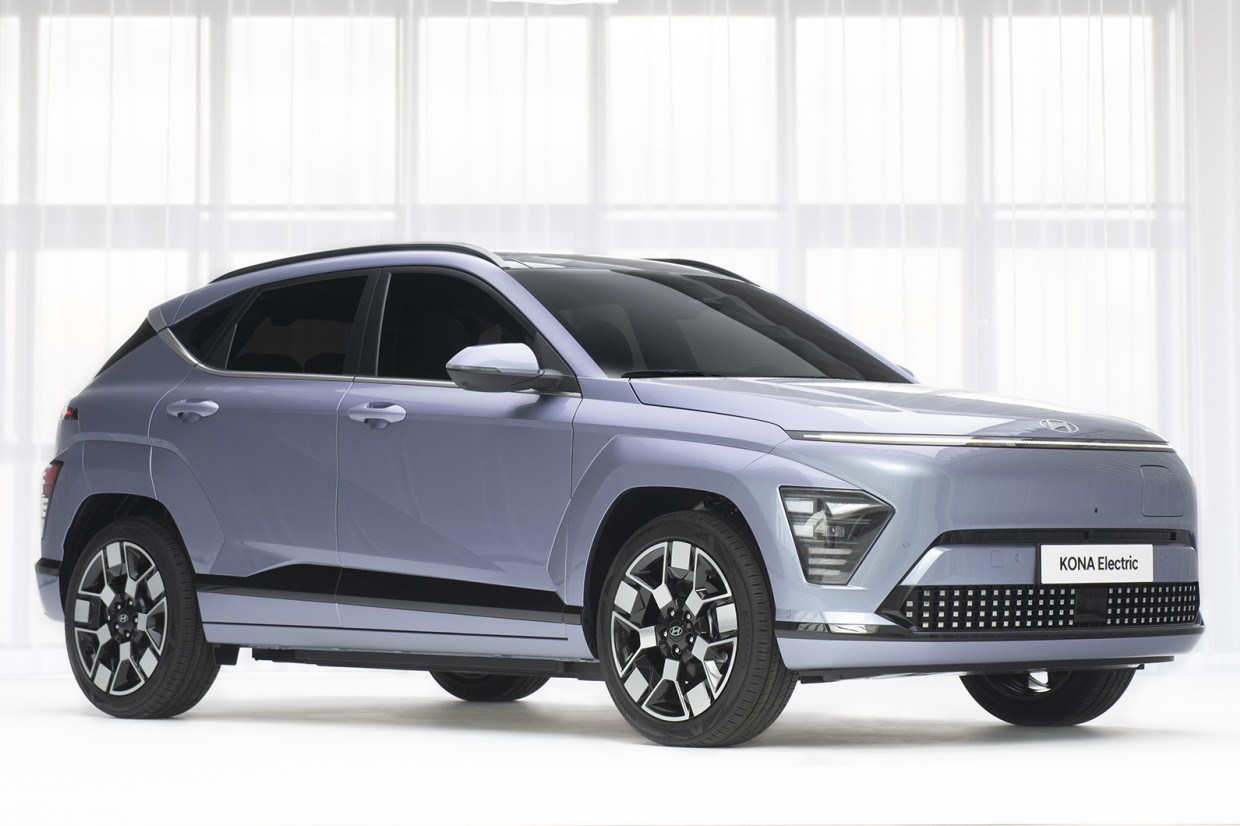
The new second-generation Hyundai Kona has been ‘upscaled’ with a new EV-focused design that takes inspiration from the Ioniq 5 and Ioniq 6.
The Korean firm launched the Kona back in 2018 with petrol and hybrid powertrains, with a battery electric version following a year later. The model received a major styling update two years ago but now, as with to the closely related Kia Niro EV, has now received a more extensive reworking including a switch to a new, bigger platform.
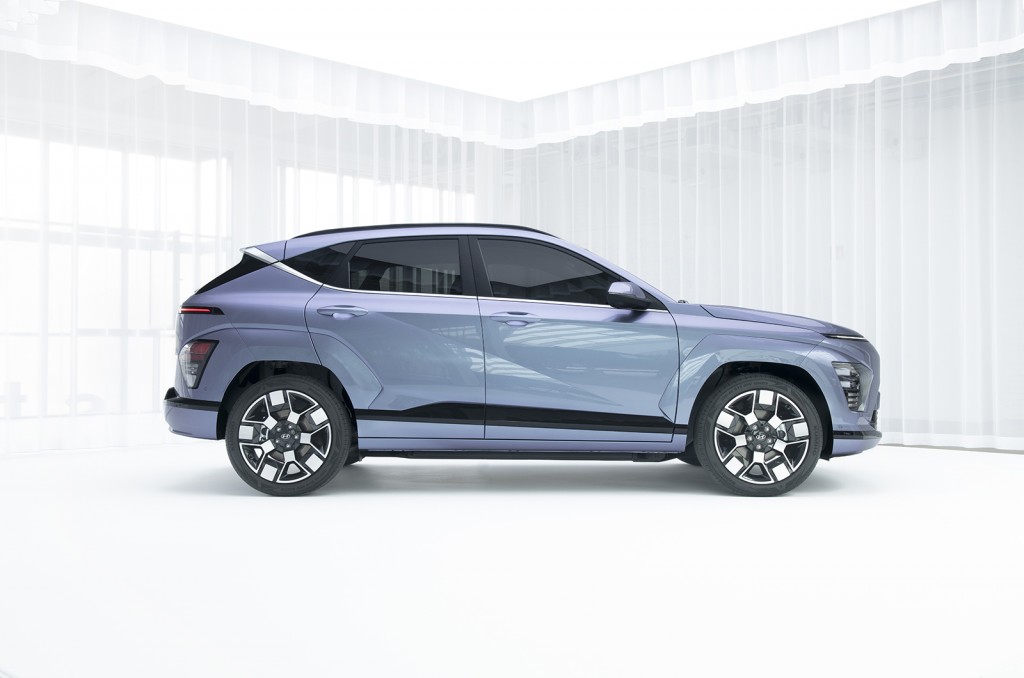
Notably, Hyundai's design team put the focus for the new model on designing the Kona EV, before then modifying that design for the petrol and hybrid versions. The revamp was first seen late last year, but Move Electric has now been given an up-close look at it – and the chance to talk to Hyundai's management about it.
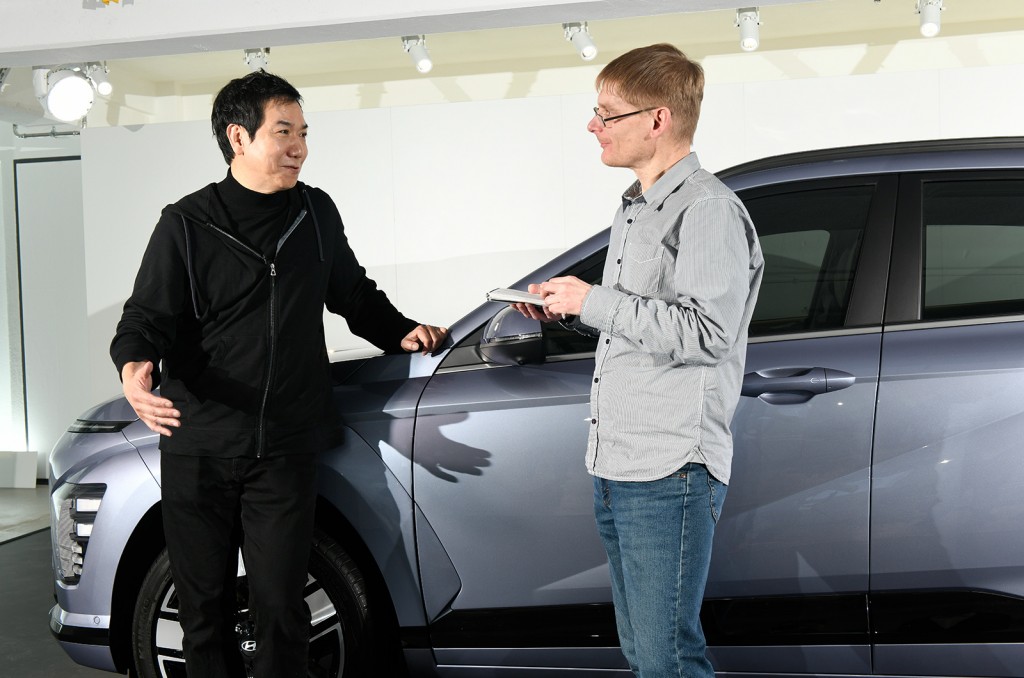
Hyundai's design chief, Sang-Yup Lee, told us the decision to focus the design on the electric version meant that the EV was less compromised, allowing the model to be "taken to the next level".
The latest EV news in your inbox: get the Move Electric newsletter
The focus on the EV model makes sense: it accounted for around 40 per cent of all first-gen Kona sales in Europe, and Hyundai believes that figure will ride to 60 per cent for the new Kona within the next few years, in part because of regulations forcing firms to sell more zero-emission vehicles.
The Kona EV is the firm's best-selling electric vehicle, ahead of the more premium and expensive Ioniq 5.
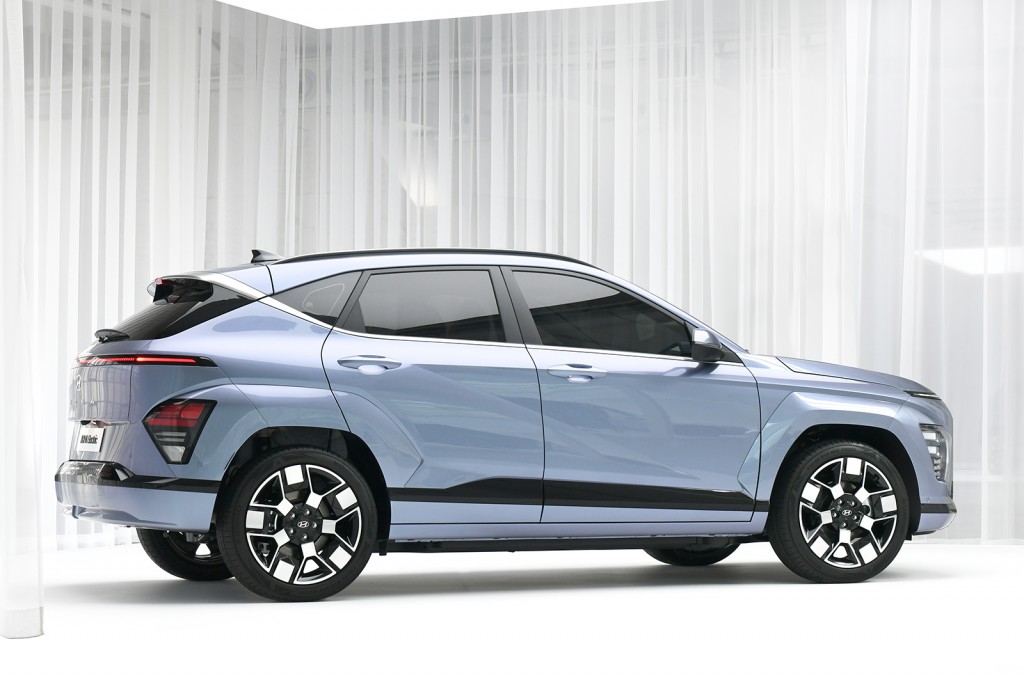
Lee said that the focus for the design team was on 'upscaling' the Peugeot e-2008 rival in both size and quality, with a particular focus on developing a spacious, upmarket interior. And if you're asking exactly what that means, you're not alone.
"One of the questions we asked was what do we mean by upscale?" said Lee. "It's not just the size: we really wanted to take this small SUV to a more premium level with the execution and all the details and the quality of materials."
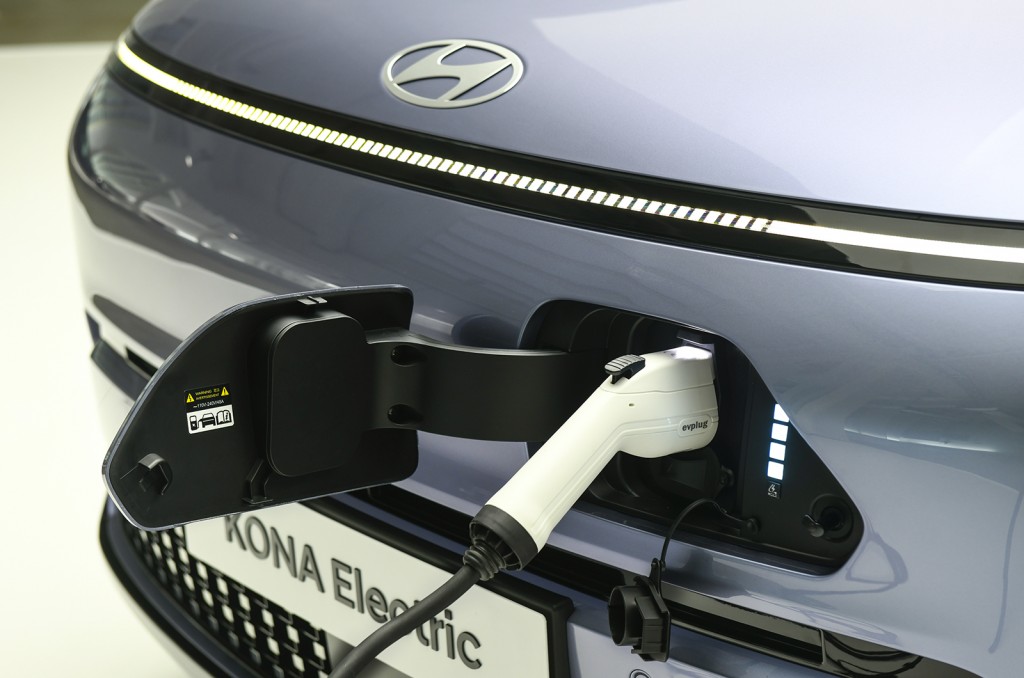
The second-generation model is significantly larger than the original Hyundai Kona Electric: at 4355mm long it’s 150mm longer than the first-gen model, and it’s also 25mm wider and 60mm higher. That makes it broadly the same size as the original Kia e-Niro, although the second-gen Niro EV also grew so there is still a small but clear size gap between the two Hyundai Motor Group models.
Hyundai Kona EV exterior styling
The exterior of the machine has received a substantial makeover, with a new 'clean' front end that features a wraparound 'seamless horizon lamp'. Lee was particularly excited that a single piece was used to house that light unit. Notably, the lights on the Kona EV feature the firm's 'parametric pixel' design, a feature only found on Hyundai's EV models.
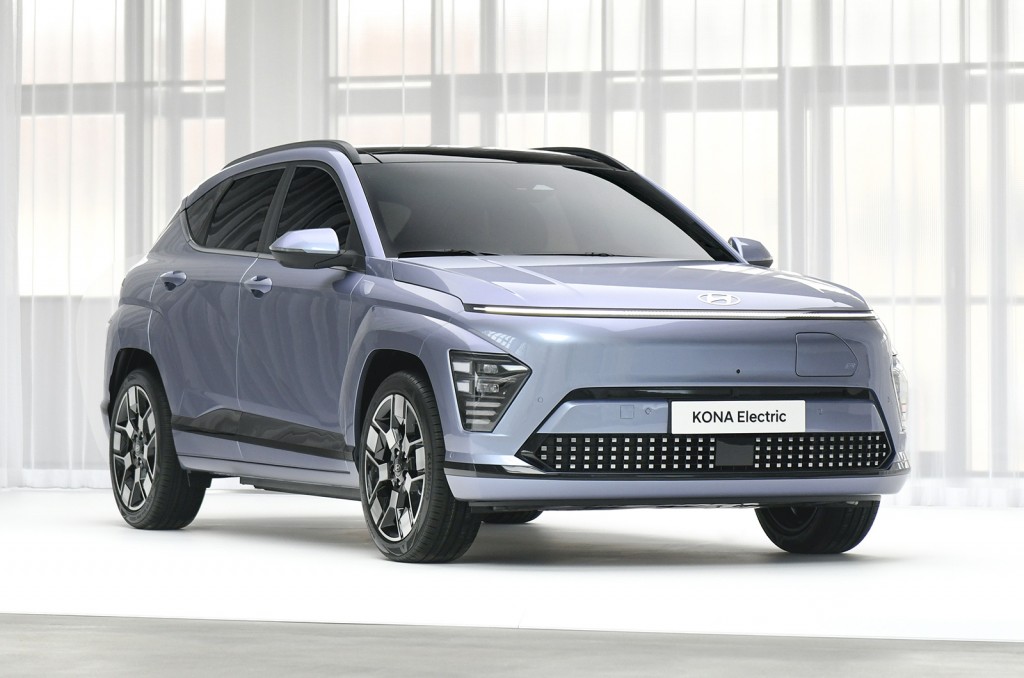
Look really closely, though, and the lights are different from the ones on the Ioniq 5 and Ioniq 6. Lee said that was quite deliberate, too: "The pixels are a very important light signature for the EVs. We’re going to apply it to all our EVs – but in future we’ll differentiate the pixels on Ioniq models, derivative EVs [such as the multi-powertrain Kona] and fuel cell EVs."
The side of the machine is sculpted with what Hyundai calls ‘parametric’ surfaces, some of which lead up to a rear spoiler. Notably, the EV version features several bespoke details beyond those pixel graphics, including 19in alloy wheels and black side mirrors and roof.
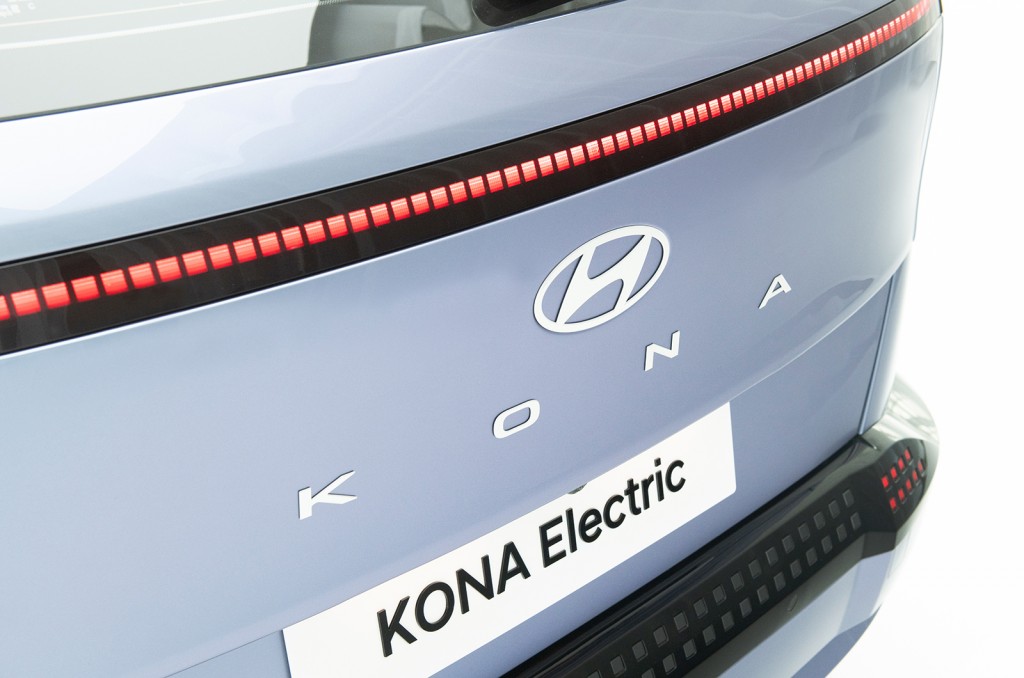
While the Kona is firmly an SUV, Lee said that the much of the exterior styling of the machine had been honed in a wind tunnel, and took inspiration from the slipstreamed styling of the Ioniq 6 saloon.
“The front is really about aerodynamics, and we developed it in the wind tunnel," said Lee. "It’s very smooth and sleek, with a drag coefficient of 0.26. We’ve been able to apply lessons from the Ioniq 6 to other vehicles – and the Kona is one of them.”
That said, the Kona still retains disctinctive styling that sets it apart from other models. Lee said that Hyundai took a 'chess piece' approach to its car design, with each model featuring a distinct design while also clearly being part of a larger set. Lee said the Ioniq 6 was the 'king' of the line-up – so what is the Kona?
"This is the Knight, because it has an unexpected and dynamic character, and it can move in lots of different ways," said Lee.
Hyundai Kona EV interior styling
The decision to make the Kona bigger was larger driven by customer feedback that customers wanted more interior space for themselves and their stuff.
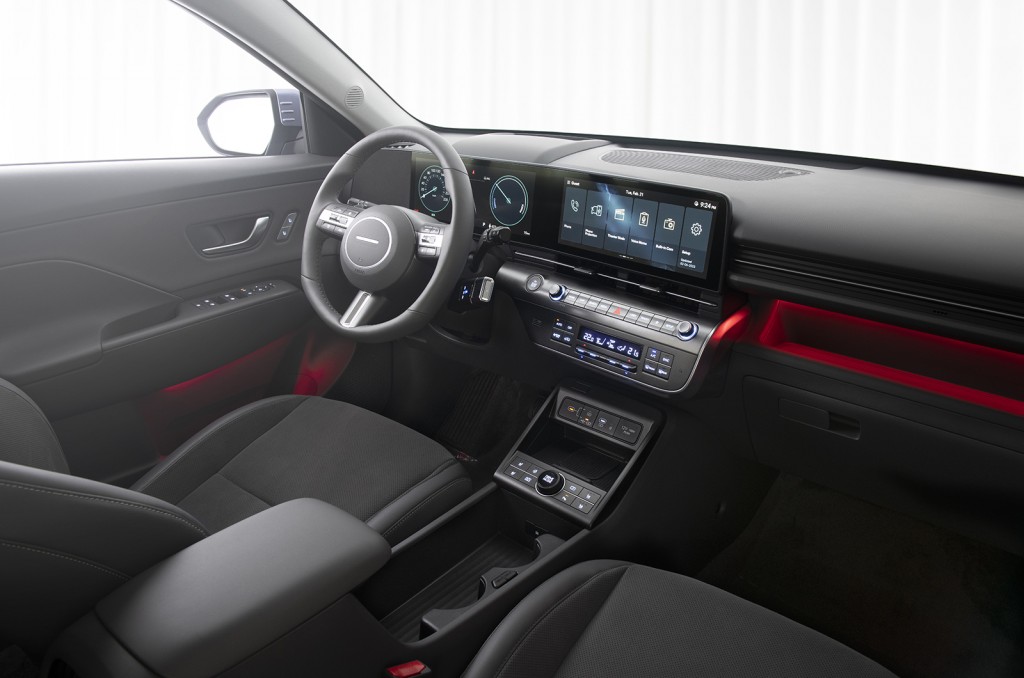
Notably, the design focus has also been on freeing up the available space. The drive controller has been moved from the centre console to a stalk on the steering wheel, freeing up space for a large multi-function storage cubby. there are even pop-out cup holders, so if you haven't got a drink on the go you can have a larger flat space to stick a bag in.
Elsewhere, the interior makes substantial use of sustainable , responsibly sourced materials, with a real focus on comfort: the aim is to make it feel more premium than the old version. "The interior space of a car is becoming a new living space," said Lee. "So we said that we'd do the interior more like furniture rather than traditional automotive design. It’s furniture, but everything is functional."
The dashboard features twin 12.3in digital displays for the driver display and the infotainment, with Lee saying that was done to make best effect of Hyundai's infotainment system. It's also rare for a car in this class to get such a large twin-screen set-up as standard. There is also an optional 12in head-up display.
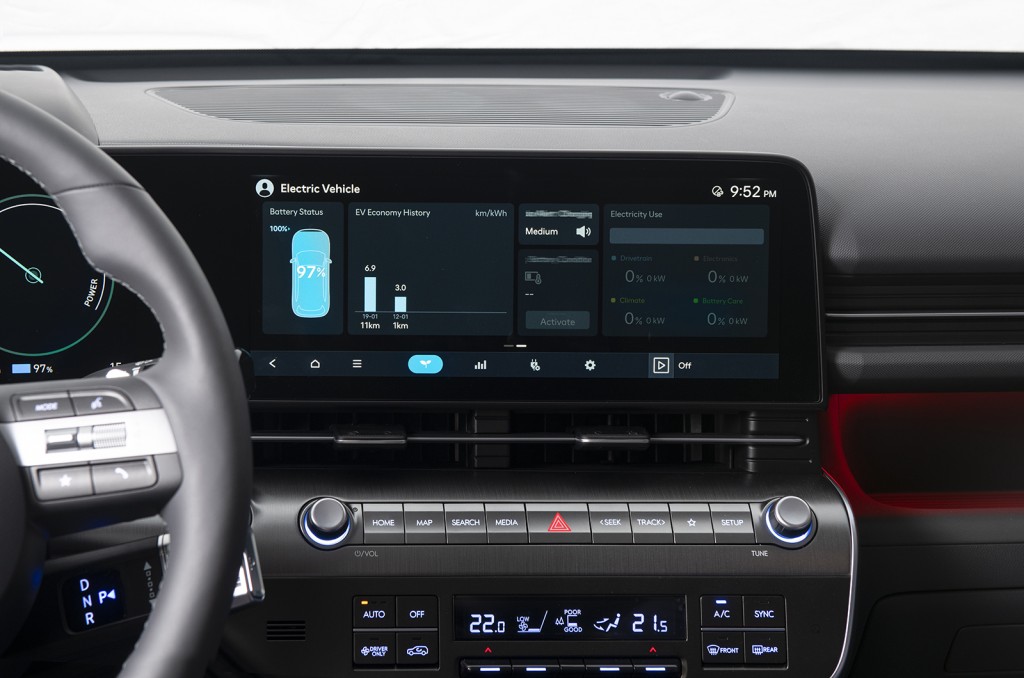
There's extra space in the rear thanks to a flat floor, which is common in EVs but highly unusual in a multi-powertrain model such as the Kona. That allows for a 'curveless' bench seat in the rear. Meanwhile, the boot has grown by 92 litres to 466 litres – addressing another keen customer request for more luggage space.
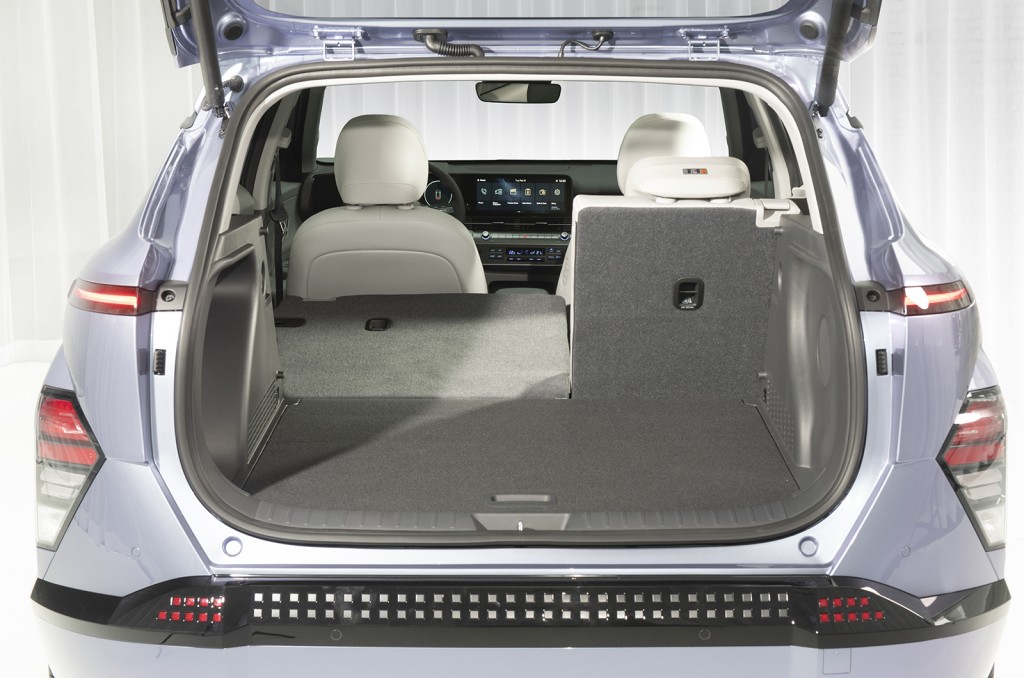
Powertrain and battery sizes
As with the previous model, the Kona EV will be offered with two power outputs and battery sizes. The Standard version will use a 115kW motor and 48.4kWh battery, which is up from 100kW and 39kWh for its predecessor. The Long Range Model keeps a 65.4kWh battery, although power has been raised from 150kW to 160kW.
The Standard model has an estimated range of 212 miles, with the Long Range version offering 304 miles. That's a small increase on the old car, despite the extra size and more powerful motor. Notably, the Long Range model has a claimed energy efficiency of 4.1 milers per kWh.
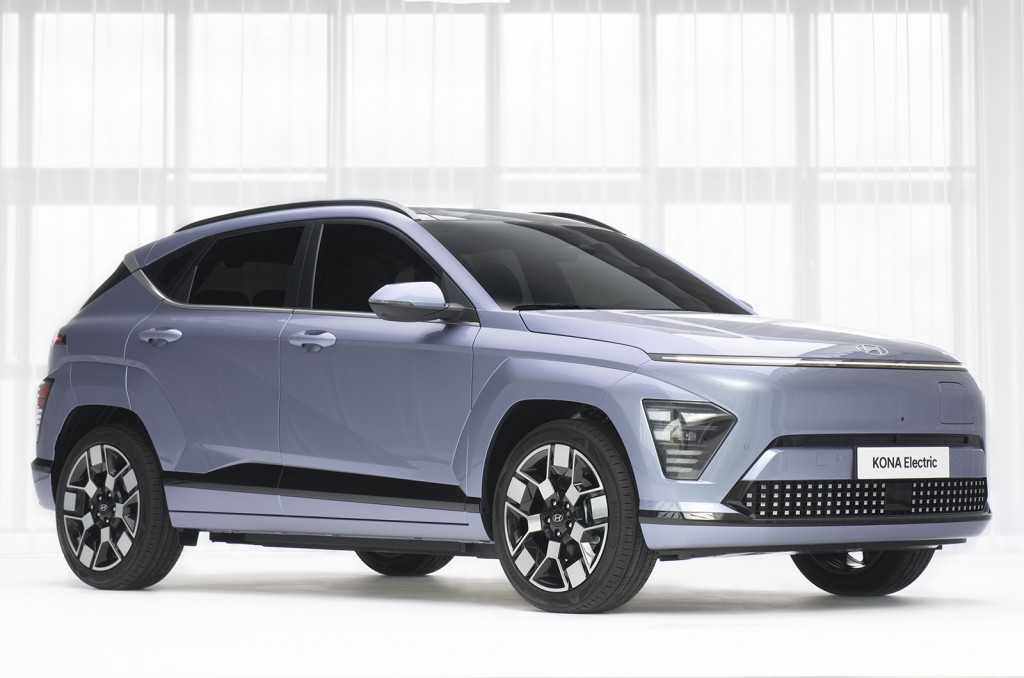
Hyundai hasn't detailed charging speeds yet, but it is expected that it will be similar to the original version, with a 10-80 per cent charge taking around 40 minutes. Because it is a multi-powertrain model, it retains a 400V architecture, unlike the 800V system in the Ioniq 5 that allows for ultra-fast charging.
The Kona EV is set to arrive in late summer, and will be offered in a range of trim levels including a sporty-styled N Line. Full UK pricing and specification have yet to be finalised, but pricing is expected to be slightly increased from the previous model and start from around £36,000.
READ MORE
Subscribe to the Move Electric newsletter
e-CARS
Chinese car brand Nio to expand into UK by end of 2023
Driving a Citroën Ami around London: five things we learned
New Polestar 3: 380kW performance EV aims to 'redefine' the electric SUV
e-BIKES
Seven essential accessories to improve your e-bike life
The Lake District village that's pioneering community e-bike schemes
e-MOTORBIKES
Honda to launch more than 10 electric motorbikes by 2030
New Zero DSR/X launched as electric adventure motorbike
Stilride: the brand reinventing electric motorbike production
e-SCOOTERS
8Tev B12 Roam e-scooter review
Pure Electric launches two new machines that 'reinvent' the e-scooter
Rise in e-scooter accidents prompts call for 'urgent' government action
e-WORLD
Artemis electric ferry revealed for Bangor to Belfast service
New Mobilize Solo Concept is a safety-conscious e-scooter rival
Volta Zero: the electric truck tearing up the rule book for the electric age

